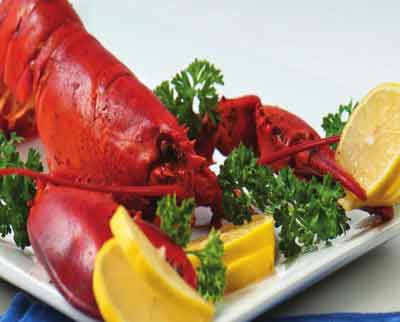Celebrate Thanksgiving with foods from the first feast

Thanksgiving is celebrated each November in the United States and each October in Canada. People traditionally gather around the dinner table flanked by friends and extended members of their families to give thanks for the blessings they enjoyed throughout the year as they dig into a delicious feast.
Turkey is typically the centerpiece of the Thanksgiving meal. Although turkey can be a delicious and nutritious addition to the table, individuals looking to expand their culinary horizons may want to borrow from the other foods believed to have been shared among the Plymouth Colony Pilgrims and Wampanoag natives during the 1621 feast that inspired Thanksgiving.
Waterfowl
Wild turkey were available in abundance in the New World, but historians believe that, during the first Thanksgiving meal, participants likely feasted on waterfowl instead of turkey. In fact, turkey wasn’t common Thanksgiving fare until after 1800. Waterfowl, according to National Geographic, includes ducks, mallards, swans, and geese. Those looking to experiment can take a break from turkey and make duck the centerpiece of their meals this Thanksgiving.
Seafood
Plymouth, Massachusetts, is located where Cape Cod Bay and the Atlantic Ocean meet. As a result, indigenous people and the pilgrims likely relied on the bounties afforded by the ocean for their sustenance. Documentation of the first Thanksgiving by pilgrim chronicler Edward Winslow indicates lobster, fish and clams were likely served. People who enjoy seafood or those who prefer to abstain from meat or poultry can embrace seafood at their Thanksgiving gathering.
Fruits and vegetables
Fruits native to the region where the first Thanksgiving took place included blueberries, plums, grapes, gooseberries, raspberries, and cranberries. Cranberry sauce was an unlikely menu option because sugar that traveled over on the Mayflower was probably depleted by November 1621, according to History.com. Also, cooks didn’t begin boiling cranberries with sugar until about 50 years later. To recreate the first Thanksgiving, enjoy raw fruit as a tasty dessert, which can be healthier than sugar-laden sauces.
Vegetables to enjoy include onions, beans, spinach, cabbage, carrots, and corn. Corn was likely turned into cornmeal and pounded into a thick corn porridge. Experimenting with a cornmeal recipe can liven up this year’s festivities.
Turnips
Plant roots found in 1621 included parsnips and turnips, and not the popular potatoes that often accompany turkey at modern Thanksgiving gatherings. The potato was not yet popular enough among the English to warrant space on the Mayflower as it made its way to present-day North America. Purées of parsnips and turnips can be delectable on their own or used as a basis for a Thanksgiving soup.
Pumpkin custard
Although pumpkins and other gourds were available in the New World, baking was not yet popularized because of the lack of wheat flour. Instead, it is possible pilgrims would hollow out gourds, add spices with milk and honey, and then roll the gourds in hot flames to form a sort of custard. Home cooks can replicate a pumpkin custard in their kitchens and serve it in lieu of pumpkin pie.
Borrowing foods from the first Thanksgiving can expand menu possibilities this November.

